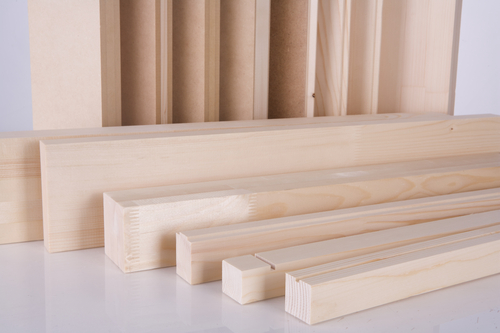In the study of timber, two main types of hardwood are generally distinguished, i.e., Hardwood and Softwood. These two varieties of hardwood differ from one another in the chemical composition and physical characteristics that distinguish them. The study of timber therefore usually begins with Hardwood. As stated above, Softwood differs from Hardwood in the chemical composition and physical characteristics that distinguish them. It is important to first understand these differences between the two types of Hardwood before one can go about analyzing the characteristics of Softwood timber.
The physical and chemical characteristics of Softwood timber are quite different from those of Hardwood. In Softwood, there are relatively fewer veins in the timber, whereas in Hardwood, there are more visible veins. Also, in Softwood, vessels are generally absent. For example, in softwood, the grain of the tree will be seen in the heartwood of a tree, whereas in hardwood, the grain will only be seen in the outer surface of the timber. Examples: Softwood has a low degree of threading, while Hardwood has a high degree of threading.
This brings us to one of the most important questions concerning the hardness of Hardwood Vs softwood timber. Generally, it is believed that Hardwood is more durable than softwood timber, due to its higher degree of threading. However, there are some exceptions to this generalization.
If a softwood tree is not fastened together at the proper juncture, i.e. if there is an uneven joint or insufficient spacing, this will greatly reduce the durability of that piece. The majority of softwood timbers do have a ‘S-shaped’ joint where two adjoining planks meet, but it is extremely prone to external forces such as rot and water. On the other hand, Hardwood timbers such as Pine have a much stronger S-shaped joint that may last for decades. It is also considered that Hardwood contains pockets of crystalline calcium within the bark that provides some amount of protection to the wood against moisture and external stresses. Nevertheless, we should remember that there are many species of Hardwood and so each type has its own weaknesses and strengths.
One of the disadvantages of softwood is its vulnerability to rotting. This usually happens during hot summers or during periods of low humidity, as the air can easily penetrate into the interiors of the wood, leading to growth of mildew or mould which may affect the furniture’s colour and appearance. Due to these threats, softwood trees are normally placed outside the home, although you may consider using it indoors in the form of cushions or throws. In addition, when purchasing a softwood decking, make sure that the deck is treated against exposure to the sun as the presence of Vitamin D is harmful for such materials. Hardwood decking on the other hand requires no treatment and can be left outdoors all year round.
One of the advantages of Softwoods is that it is less expensive than hardwood. However, the price of softwood lumber depends on many factors such as the type of timber, its finish, quality, size and type of planks used. For example, cedar wood is usually more expensive than pine. While the latter’s grain tends to run parallel to the surface, cedar lumber’s grain tends to be unidirectional. Therefore, when the wood is cut into planks for use in flooring or furniture, the planks tend to run in different directions, resulting in irregular grain pattern. The best quality softwoods are those with straight grain.

